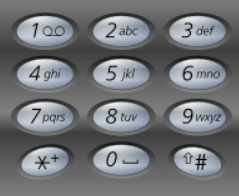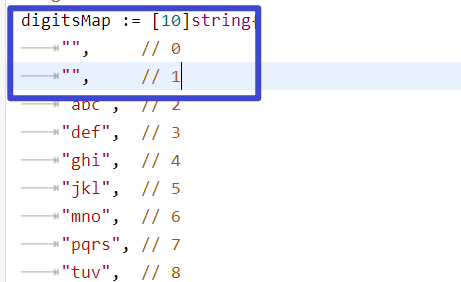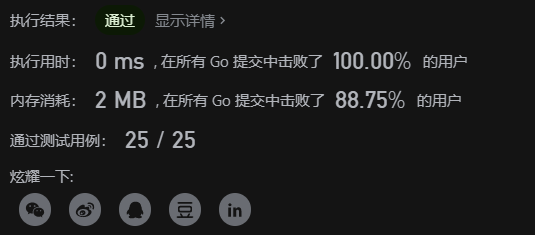题目
代码与解析
 要存储数字和字母对应关系的话,可以用数组或者map
要存储数字和字母对应关系的话,可以用数组或者map
这里采用数组。
 前面之所以加两个空,因为函数参数的digits是从2~9,为了对应上索引。采用map的话就不用了。
前面之所以加两个空,因为函数参数的digits是从2~9,为了对应上索引。采用map的话就不用了。
digitsMap := [10]string{
"", // 0
"", // 1
"abc", // 2
"def", // 3
"ghi", // 4
"jkl", // 5
"mno", // 6
"pqrs", // 7
"tuv", // 8
"wxyz", // 9
}

回溯三部曲:
- 确定参数及返回值
传入tempString和Index,来记录遍历第几个数字 -
确定终止条件
但tempString长度等于digits的时候,说明长度符合要求,要添加进res -
确定单层逻辑
tempInputInt := digits[Index]-'0' // 转为int
用这句话转为int, 输入的digits是:类似“234”这种,如果不用这种方式,tempInputInt接受到的则是ascii码
// 获取“2345”中的 第Index个元素,得到类似2,3,4,5
tempInputInt := digits[Index]-'0' // 转为int
// 从数组对应关系取值,可以用map
tempS := digitsMap[tempInputInt]
tmp 就是这样的一个字符串,
就是这样的一个字符串,
for横向遍历字符串,取到具体一个字母
递归取i+i个,这样深度,广度都有了
func letterCombinations(digits string) []string {
res := []string{}
if len(digits)==0{
return res
}
digitsMap := [10]string{
"", // 0
"", // 1
"abc", // 2
"def", // 3
"ghi", // 4
"jkl", // 5
"mno", // 6
"pqrs", // 7
"tuv", // 8
"wxyz", // 9
}
var backtracking func(tempString string, Index int)
backtracking = func(tempString string, Index int){
if len(tempString)==len(digits){
res = append(res, tempString)
return
}
// 获取“2345”中的 第Index个元素,得到类似2,3,4,5
tempInputInt := digits[Index]-'0' // 转为int
// 从数组对应关系取值,可以用map
tempS := digitsMap[tempInputInt]
for i:=0;i<len(tempS);i++{
tempString = tempString + string(tempS[i])
backtracking(tempString, Index+1)
tempString = tempString[:len(tempString)-1]
}
}
backtracking("", 0)
return res
}





